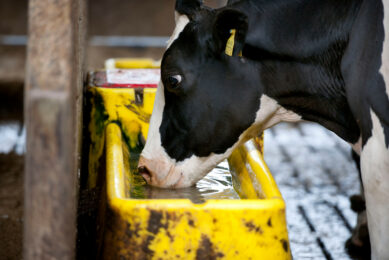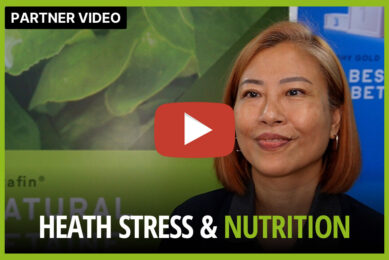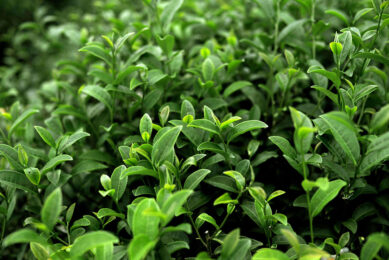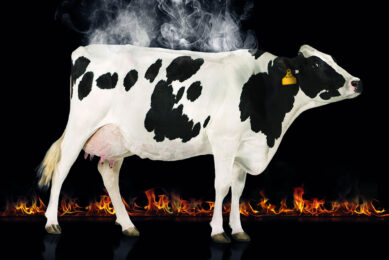4 tactics for feeding sows under heat stress
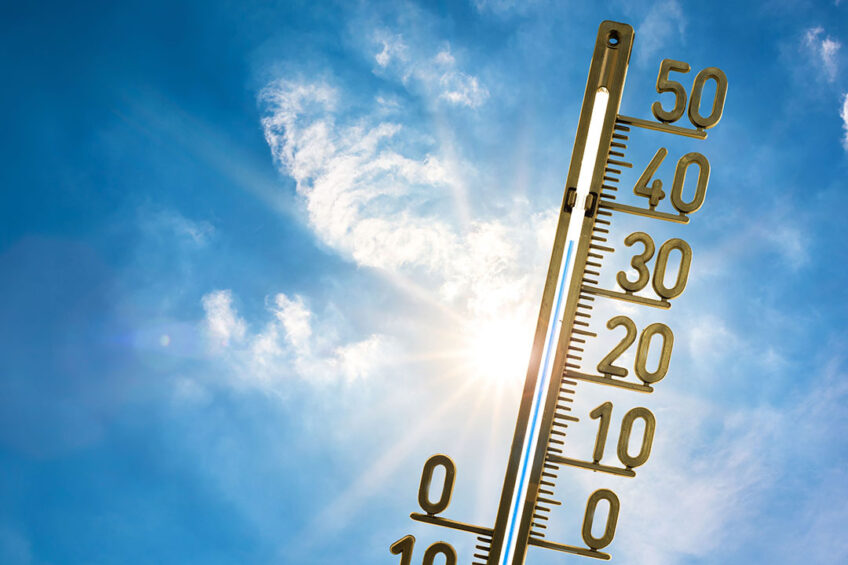
Sows are most comfortable in a temperature range between 7.22 and 21.1ºC, with 15.55 to 18.33ºC being optimal but when the temperatures surpass 21.1ºC, sows start to suffer from adverse effects of heat stress.
This article is part of our premium content. You can read this article for free as a gift from us. Would you like to read more articles like this? For just €4.95 per month, you have unlimited access to all our premium content.
Heat-stressed sows experience increased rectal temperature post-partum, higher respiration rates, prolonged farrowing, reduced feed intake, all leading to a poorer sow welfare, performance, and longevity. In addition, heat stress has significant financial impact on producers, and it is estimated to cost $300 million to U.S. Swine industry. Several tactics can be applied to help heat-stressed sows continue to consume the required nutrients to maintain their health, welfare, and performance.
Text continues underneath image.
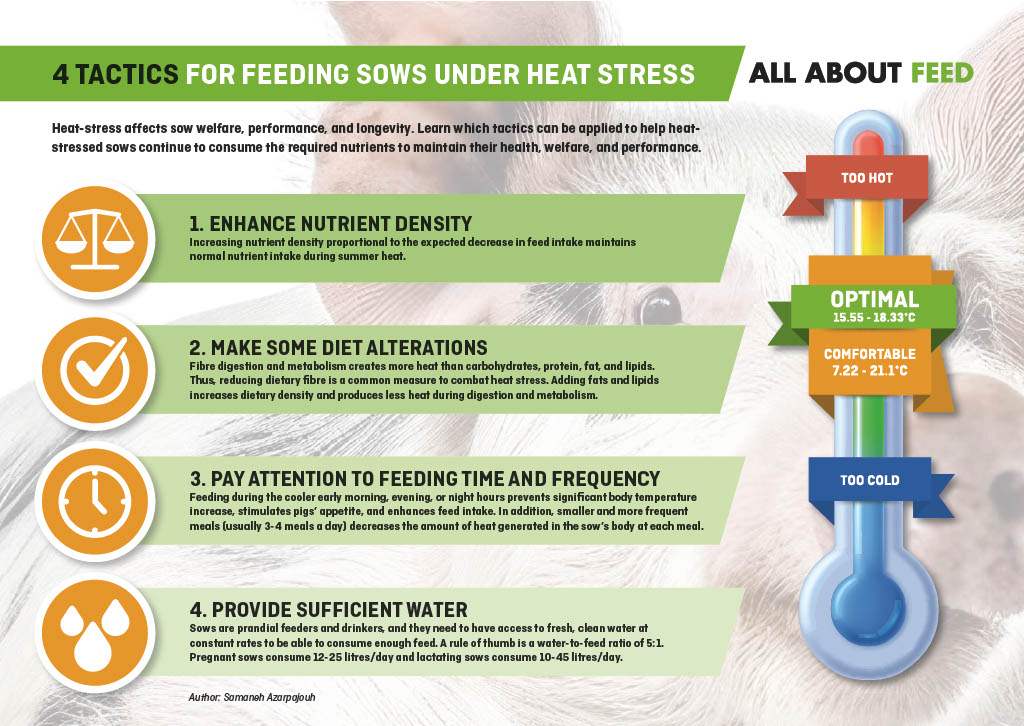
 Enhance nutrient density
Enhance nutrient density
Increasing nutrient density proportional to the expected decrease in feed intake maintains normal nutrient intake during summer heat. However, the manufacturing regulation and limits for each nutrient needs to be considered while applying this method. In addition, pelleting enhances physical density and nutrients uptake at a given volume of feed, therefore, supports milk production and maintains body condition.
 Make some diet alterations
Make some diet alterations
Fibre digestion and metabolism creates more heat than carbohydrates, protein, fat, and lipids. Thus, reducing dietary fibre is a common measure to combat heat stress. Adding fats and lipids increases dietary density and produces less heat during digestion and metabolism. Therefore, diets higher in fat and lipids (7-10%) with proportional level of all needed amino acids and other nutrients are suitable for summer feeding and provide sufficient metabolic energy. Liquid feeding is another approach that increases feed intake during summer heat.
 Pay attention to feeding time and frequency
Pay attention to feeding time and frequency
Feeding during the cooler early morning, evening, or night hours prevents significant body temperature increase, stimulates pigs’ appetite, and enhances feed intake. In addition, smaller and more frequent meals (usually 3-4 meals a day) decreases the amount of heat generated in the sow’s body at each meal, reduces the amount of heat the sow needs to dissipate and increases feed intake by 10-15%. Moreover, feed is more susceptible to spoilage in hot, humid conditions especially if it contains high levels of fat and if the food in not fresh, the feed consumption will decrease. However, increasing feeding frequency in conjunction with feeding smaller meals at each feeding is an effective method to keep feed fresh, as well. Although, adapting worker’s schedules to allow for early morning and late-night feedings might be challenging.
 Provide sufficient water
Provide sufficient water
Sows are prandial feeders and drinkers, and they need to have access to fresh, clean water at constant rates to be able to consume enough feed. A rule of thumb is a water-to-feed ratio of 5:1. Pregnant sows consume 12-25 litres/day and lactating sows consume 10-45 litres/day.
Before summer, drinker design, water flow, water quality and drinker management are important areas to revisit. High ambient temperature enhances water consumption, as well as urination which are effective mechanisms to lose body heat. Furthermore, producers need to consider water temperature and quality, since during summer heat, pigs drink almost double the quantity of cool (10ºC) water than warm (26.6ºC) water.




